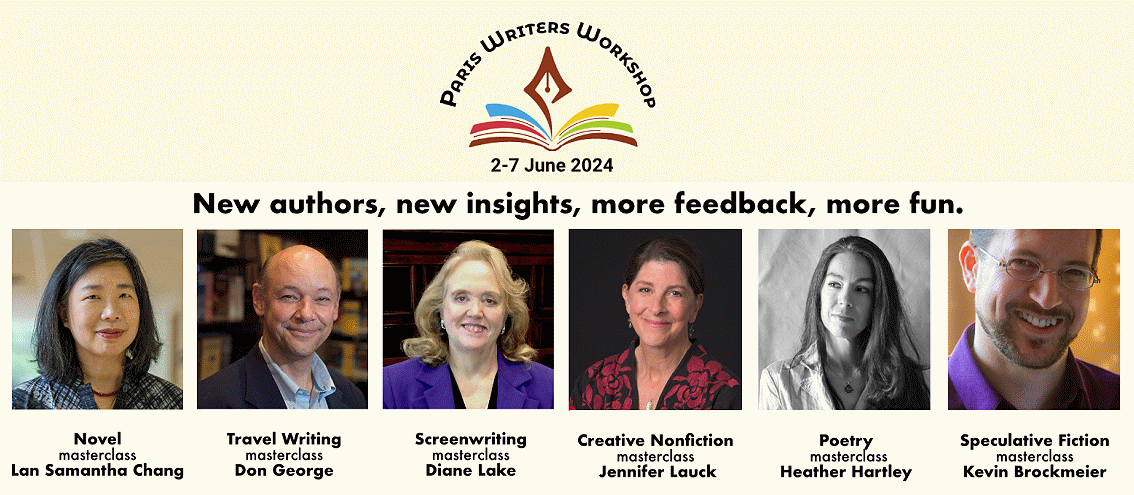
From Idea to Script to Sale





Before I get to today’s blog…
Thinking about doing more with your writing? Why not join me in Paris June 2-7 for my Masterclass in Screenwriting? Come be part of a dynamic community of writers and literary agents to learn, to write, to network, to energize your literary goals—and just to have fun in the City of Light!
The Paris Writers Workshop is the longest running literary program of its kind. This program offers 6 masterclasses by renowned authors, each a specialist in their field—and I’ll be teaching the Screenwriting Masterclass—in English, of course.
The workshop will be held at Columbia University’s beautiful Reid Hall campus in the heart of literary Paris—Montparnasse.
Registration is now open: https://wice-paris.org/paris-writers- workshop
We’ll have a great time getting your story ideas off the ground!!

Movies from the Heart—Jezebel
From the sparkling It’s Love I’m After last week to a more well-known film this week—Jezebel [1938], which became a bit of a classic. Its writers included Clements Ripley, Abem Finkel and John Huston. There were others who added bits to the screenplay but were uncredited. In other words, lots of writers touched this picture.
Some background on this particular film is in order. This film was being made at the same time as Gone with the Wind—which would come out a year later in 1939. The star of Jezebel, Bette Davis, had expected the studio to give her the role of Scarlett O’Hara. But when that role went to Vivien Leigh, Bette was royally upset—she thought that role was HERS.
So to mollify her, the studio gave her this film—about a similar Southern Belle—and it turned into Davis’s best performance yet—for which she won the Academy Award. Of course, Gone with the Wind was a sweeping war movie as well as a love story, but Davis felt vindicated winning the Academy Award and critics all raved about her performance. Take a look at the trailer for the film:
https://www.youtube.com/watch?v=TxXUbXhN7H0
Did you notice the words “scarlet portrait” in describing the way Davis portrayed the character in the film? Everyone had read the book, Gone with the Wind, and everyone knew Davis had not gotten the role. So this was a bit of a jab at that fact—using the word scarlet.
And the trailer also saying it was the story of a “woman who was loved who should have been whipped” tells us a great deal about the point of view of the filmmakers. That, in their minds, she was the bad girl who deserved what she got.
I particularly like the tagline used in some advertisements to describe her character: “Half angel… half siren… all woman!” And another: “No one could forget the girl with the sweetest lips in Dixie… and the wickedest heart in all the world!”
Notice that’s not just the wickedest heart in Dixie—but all the world!
And from the trailers you’d almost think Davis’s character was named Jezebel! But her name was Julie—and after wearing a red dress to a ball where it was expected that unmarried young women would wear white, she was castigated and called a Jezebel, after the character in the bible.
What an interesting character. And the way the script is written you’re supposed to love her then hate her then love her again.
The director William Wyler famously had an argument with Davis during the production. She reacted by starting an affair with her co-star, Henry Fonda, who played her love interest in the film. Fonda was just a young actor at the time and not the beloved star he would become. The affair lasted until Fonda’s wife called her and asked her to stop seeing Fonda… and Davis did. Davis had thought the affair would help their performance on screen… ah, the lengths actors will go to for a great performance!
The character of Julie was quite an innovative one—she was feisty and had her own way of looking at what was right in the world… today she’d be a hero instead of castigated! But for writers, it’s a good reminder of what’s “acceptable” at any point in history you’re writing about… and it reminds you of the important choices you must make to be true to your characters.
Next week we’re on to the screwball comedy that pretty much defined the name: Bringing Up Baby.
Copyright © Diane Lake
12Nov23